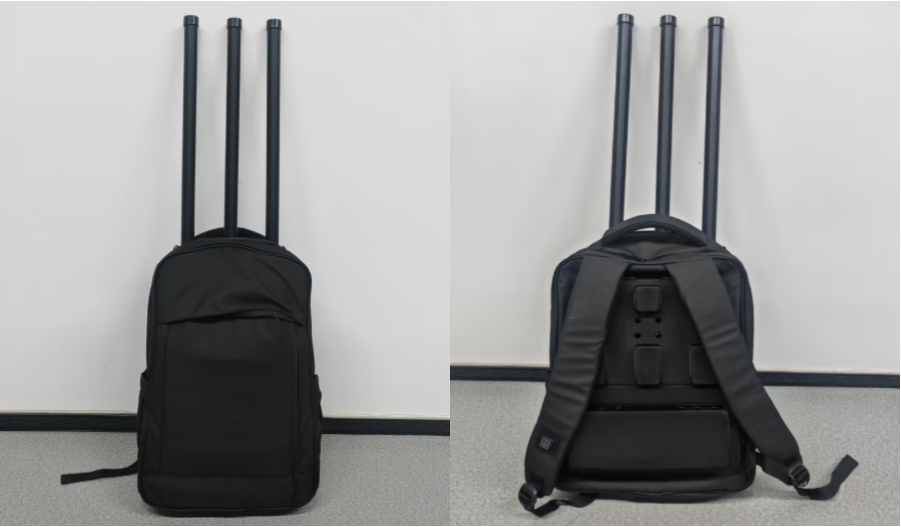High-Power Omnidirectional Antennas: RF element’s Robust Solutions for Counter-Drones- Our Technological Leaps
In an era where unauthorized drone activities pose significant risks to critical infrastructure, public safety, and military operations, high-power omnidirectional antennas have emerged as a cornerstone of effective counter-drone technology. RF element, a leader in advanced RF solutions, specializes in designing 50–200W omnidirectional antennas that deliver unparalleled signal strength and 360° coverage, specifically engineered to disrupt drone communications across critical frequency bands (433 MHz, 915 MHz, 2.4 GHz, and 5.8 GHz). These antennas empower counter-drone systems to neutralize threats by overpowering drone control, navigation, and telemetry signals.
This guide explores:
Technical specifications and design innovations of RF element’s high-power omnidirectional antennas.
Applications in counter-drone systems and other high-demand scenarios.
Competitive advantages over traditional directional antennas.

Technical Specifications and Design Innovations
1. Wide Frequency Coverage for Drone Neutralization
RF element’s omnidirectional antennas operate across the 433 MHz to 6 GHz spectrum, covering all major drone communication and navigation bands:
433 MHz & 915 MHz: Commonly used for long-range remote control and telemetry in industrial drones.
2.4 GHz & 5.8 GHz: Standard frequencies for Wi-Fi-based drones and real-time video transmission.
The antennas’ modular design allows customization for niche bands (e.g., 1.5 GHz for GPS/BeiDou jamming), ensuring compatibility with global counter-drone systems.
2. High Power Output and Gain
Power Range: 50–200W, enabling interference distances of 1–3 km in urban environments and 3–5 km in open areas.
Gain: 8–12 dBi, balancing broad coverage with signal penetration.
Thermal Management: Integrated cooling systems (e.g., high-efficiency fans and heat sinks) ensure stable performance during prolonged operation.
3. Ruggedized Construction
IP67-Rated Enclosures: Protect against dust, moisture, and extreme temperatures (-40°C to +85°C).
Lightweight Materials: Aluminum alloy and fiberglass reduce weight for portable deployments without compromising durability.
Applications in Counter-Drone Systems
1. Signal Jamming and Neutralization
Counter-drone systems rely on high-power omnidirectional antennas to emit overpowering signals that disrupt drone communication links. Key mechanisms include:
Satellite Navigation Jamming: Block GPS/GLONASS signals, forcing drones into hover or return-to-home modes.
Control Link Override: Overwhelm 2.4 GHz and 5.8 GHz frequencies to sever pilot-to-drone connections.
2. Critical Infrastructure Protection
Airports and Military Bases: Deploy antennas to create 360° no-fly zones, preventing unauthorized drone incursions.
Power Plants and Oil Refineries: Neutralize drones carrying surveillance or explosive payloads.
3. Public Event Security
Concerts and Political Rallies: Ensure safety by disabling rogue drones in crowded areas.
Advantages Over Directional Antennas
While directional antennas focus energy into narrow beams, RF element’s omnidirectional models offer unique benefits for counter-drone applications:
| Feature | Omnidirectional Antennas | Directional Antennas |
|---|---|---|
| Coverage | 360° signal distribution | Limited to specific angles |
| Deployment Speed | Rapid setup with no alignment needed | Requires precise positioning |
| Threat Response | Simultaneously neutralize multiple drones | Single-target focus |
| Cost Efficiency | Lower operational complexity | Higher installation/maintenance costs |
RF element’s Competitive Edge
1. Customizable Solutions
Band-Specific Tuning: Optimize antennas for regional frequency allocations (e.g., 915 MHz in North America, 868 MHz in Europe).
Scalable Power: Upgrade from 50W to 200W configurations based on mission requirements.
2. Advanced Interference Mitigation
Multi-Channel Segmentation: Isolate and target specific drone frequencies to minimize collateral interference.
AI-Driven Adjustments: Dynamically adapt output power and frequency sweeps to counter advanced drones with anti-jamming protocols.
3. Global Certifications
FCC/CE/RoHS Compliance: Ensures adherence to international safety and emissions standards.
Future Trends in Counter-Drone Technology
AI Integration: Machine learning algorithms will enhance signal targeting and reduce response times.
6G Readiness: Antennas will support higher frequencies (e.g., 24–40 GHz) to counter next-gen drones.
Energy Efficiency: Solar-powered designs for remote deployments.
RF element’s high-power omnidirectional antennas redefine counter-drone capabilities, combining brute-force signal strength with intelligent design. Whether safeguarding airports, critical infrastructure, or public events, our antennas deliver unmatched reliability and adaptability.


